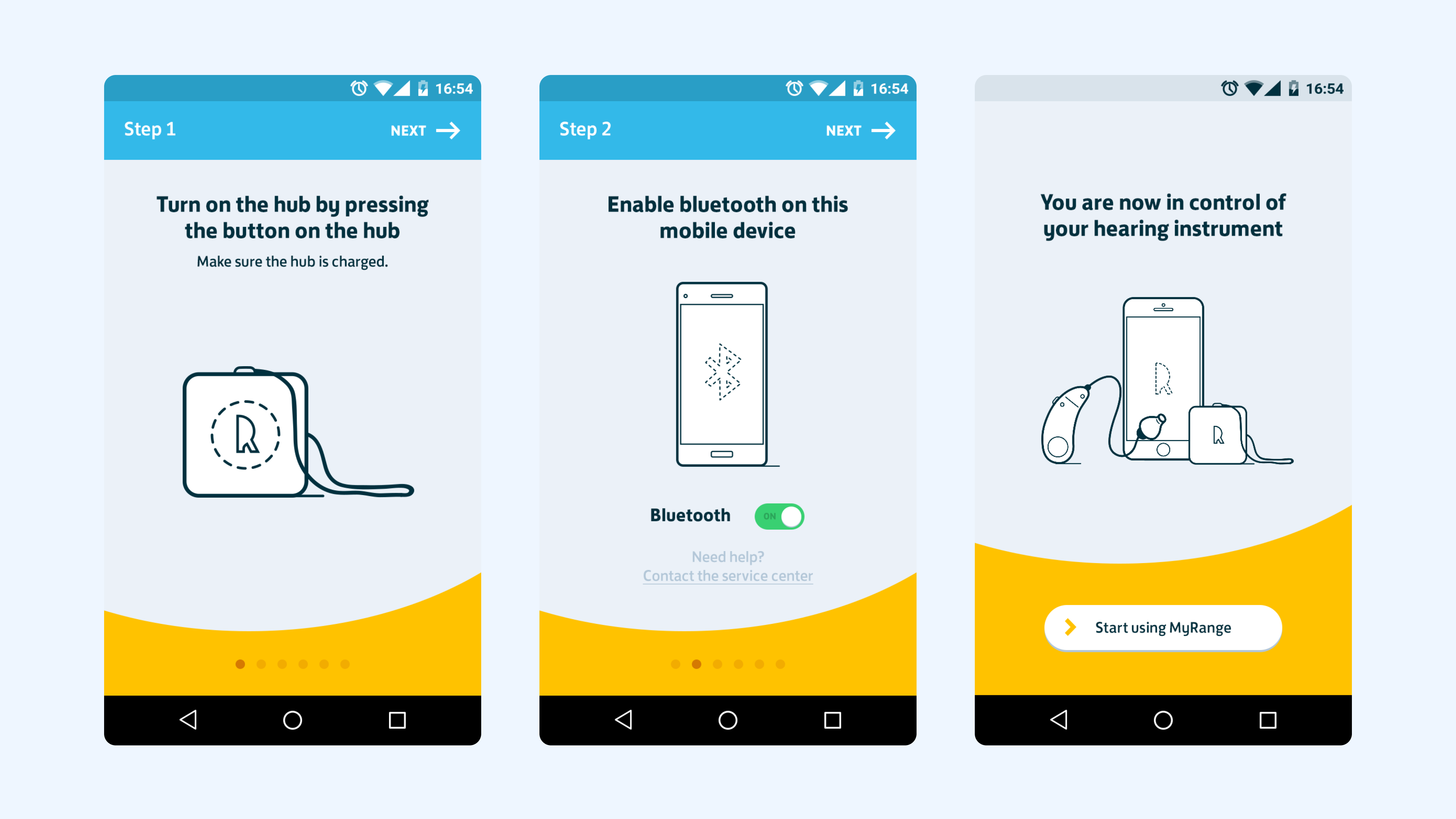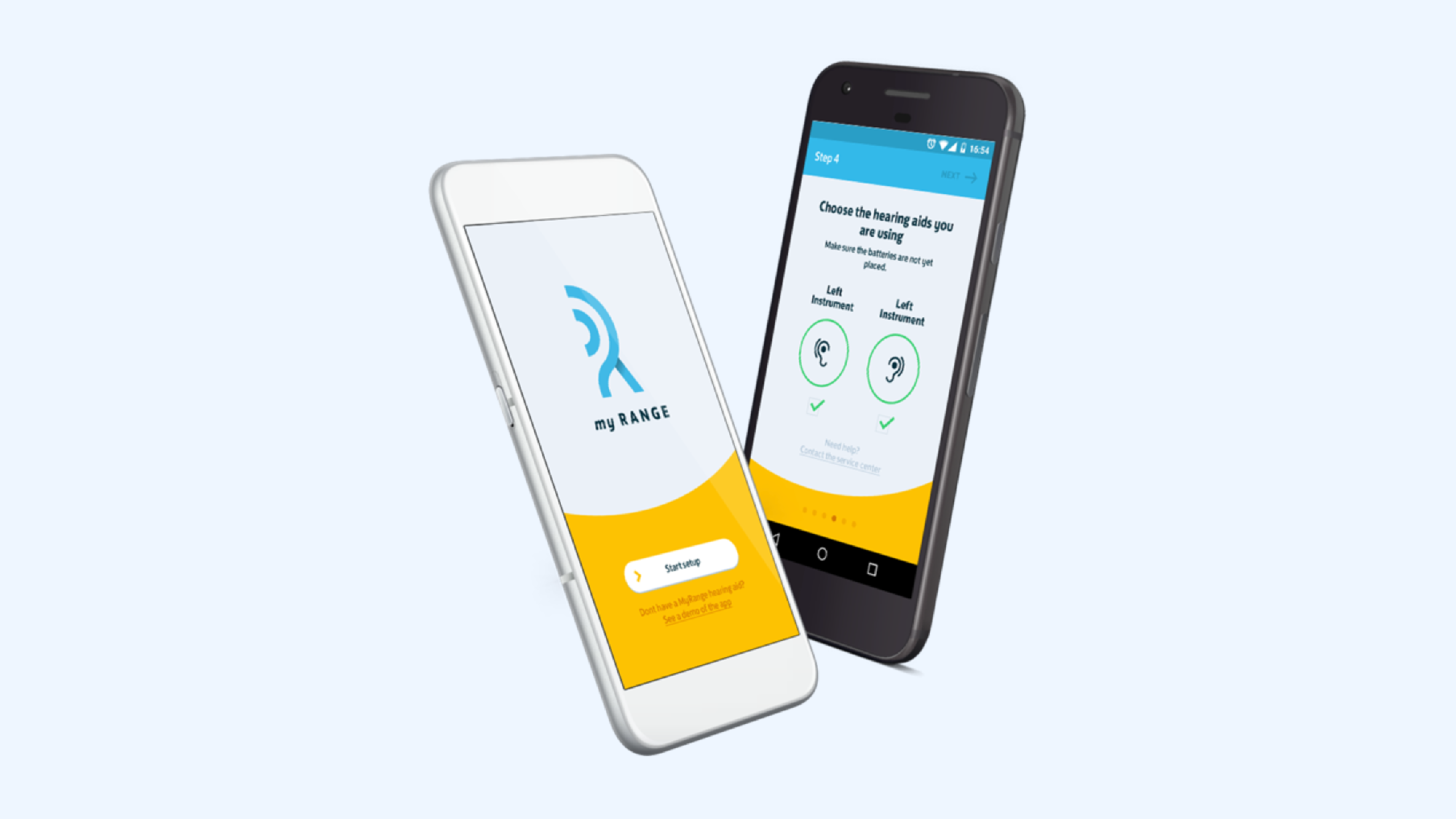Seamless hearing aid control with MyRange
Interaction design
Usability testing
Multi-platform
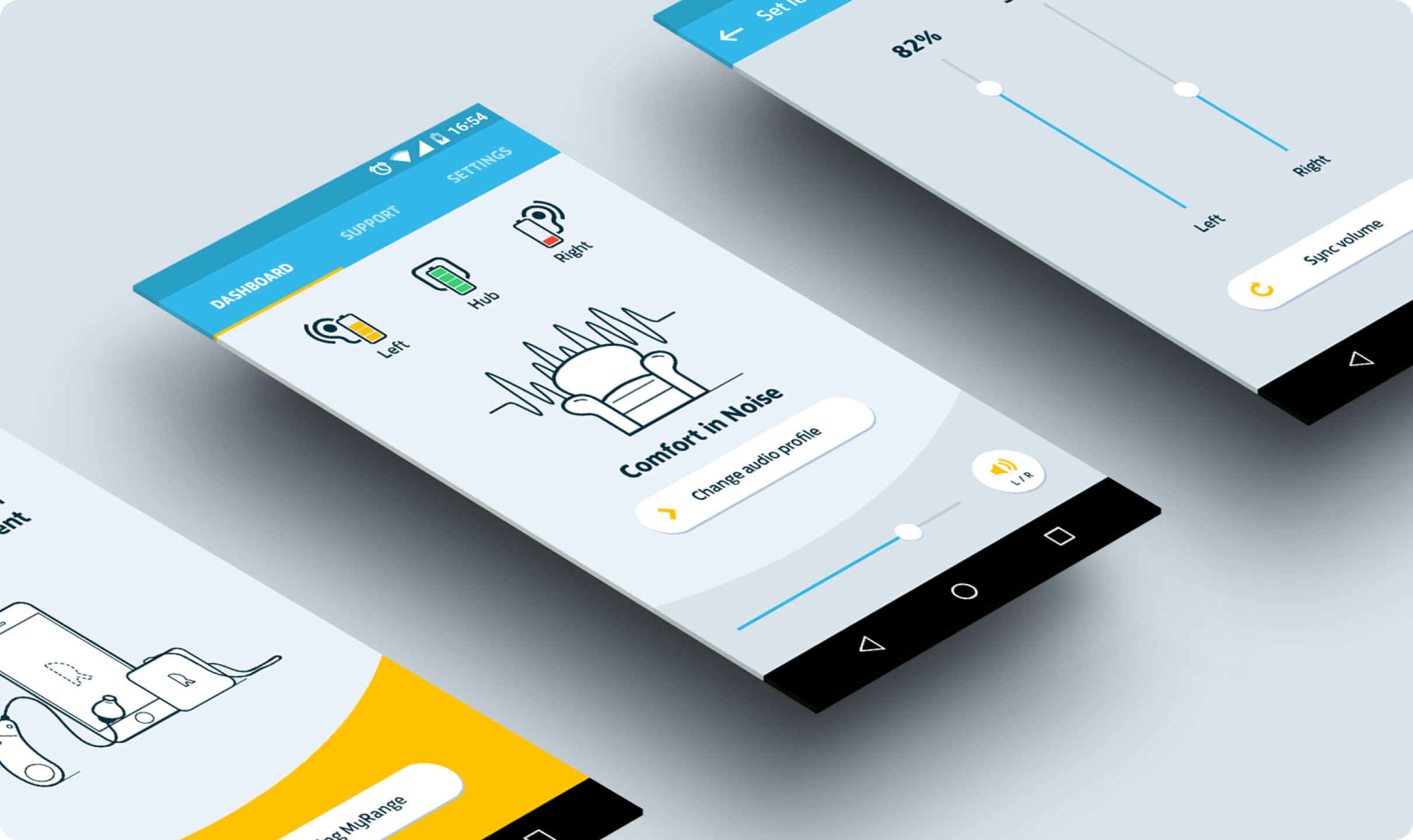
Summary
AudioNova, a fast-growing international hearing care provider, sought to develop a mobile application that would empower users of hearing aids by giving them greater control over their hearing experience.
The opportunity
This project presented an opportunity to create a user-friendly and innovative mobile app that would seamlessly integrate with hearing aids and provide users with a modern and intuitive way to manage their hearing.
Design
We designed the MyRange app from scratch, focusing on a user-friendly experience and seamless integration with hearing aids, especially considering the complexities of Bluetooth connectivity.
- Extensive Flowchart: We developed a comprehensive flowchart to map out all potential scenarios during the app's onboarding process, ensuring a smooth and robust user experience regardless of connection issues.
- User Research & Feedback: Throughout the design process, we conducted user research with potential users, testing prototypes and gathering feedback to ensure the app's features and usability met their needs.
- Platform-Specific Design: While maintaining a consistent style and user experience, we implemented unique patterns and features tailored specifically to both iOS and Android platforms.
Results
- Positive User Feedback: Users praised the app's intuitive design and modern feel, with one respondent stating, "The app brings hearing aids closer to a product that fits this day and age. Instead of feeling dusty and old, it makes it modern and a joy to use."
- Seamless Integration: The app successfully integrated with hearing aids, providing users with a smooth and reliable experience.
- Enhanced Control: The app offered users greater control over their hearing aids, allowing them to manage settings, check battery status, and adjust audio profiles for different environments.
Key Takeaways:
- User-Centered Design: A user-centered design approach was crucial for developing an app that met the needs of hearing-impaired users and provided a positive experience.
- Planning for Complexity: Thorough planning and consideration for potential technical challenges, like Bluetooth connectivity, ensured a robust and reliable app.
- Platform Consistency: The app maintained a consistent style and user experience across both iOS and Android platforms, enhancing usability and user satisfaction.
Related work
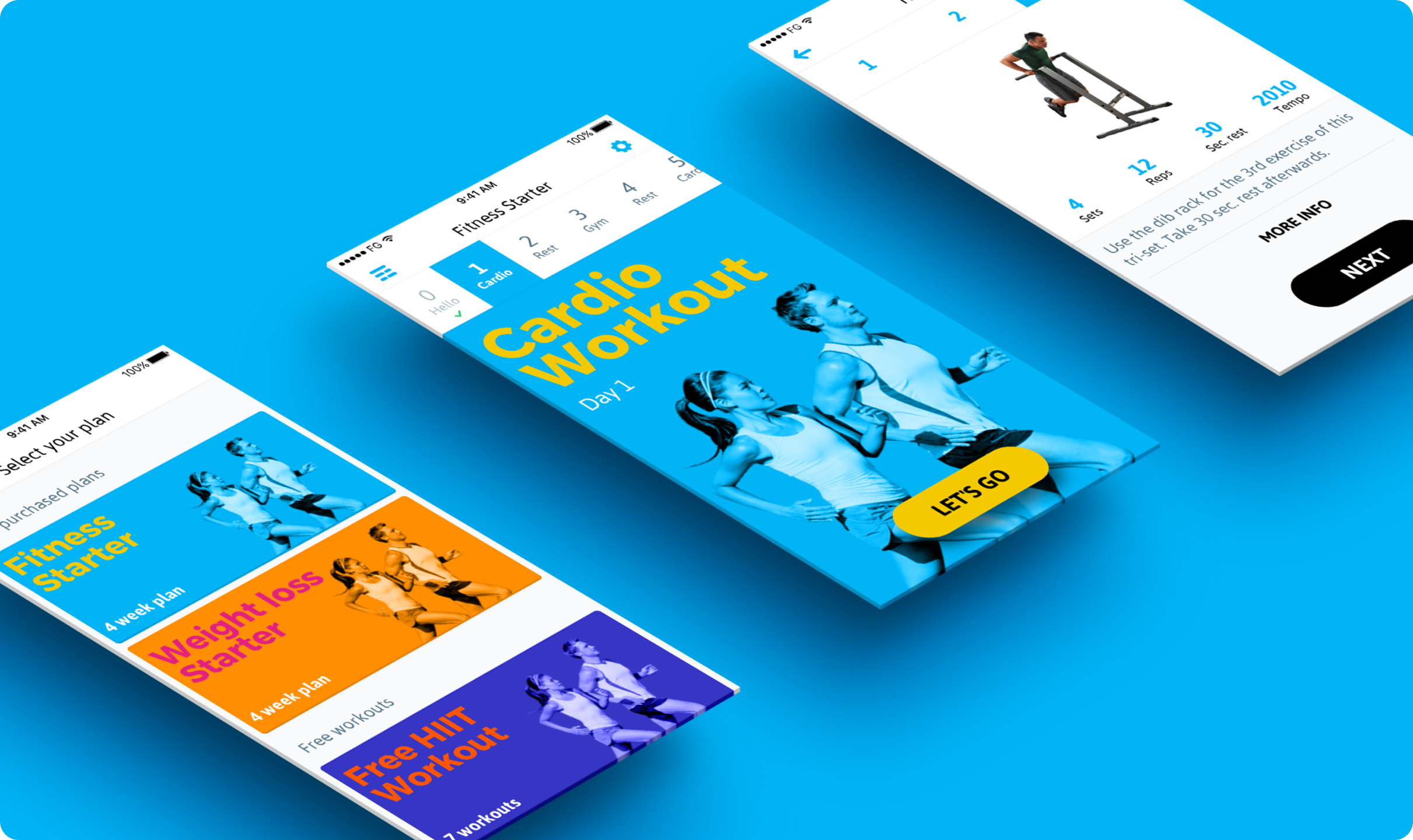
Fitness Genes
Designed a website and mobile app that brought a DNA-powered fitness platform to life.
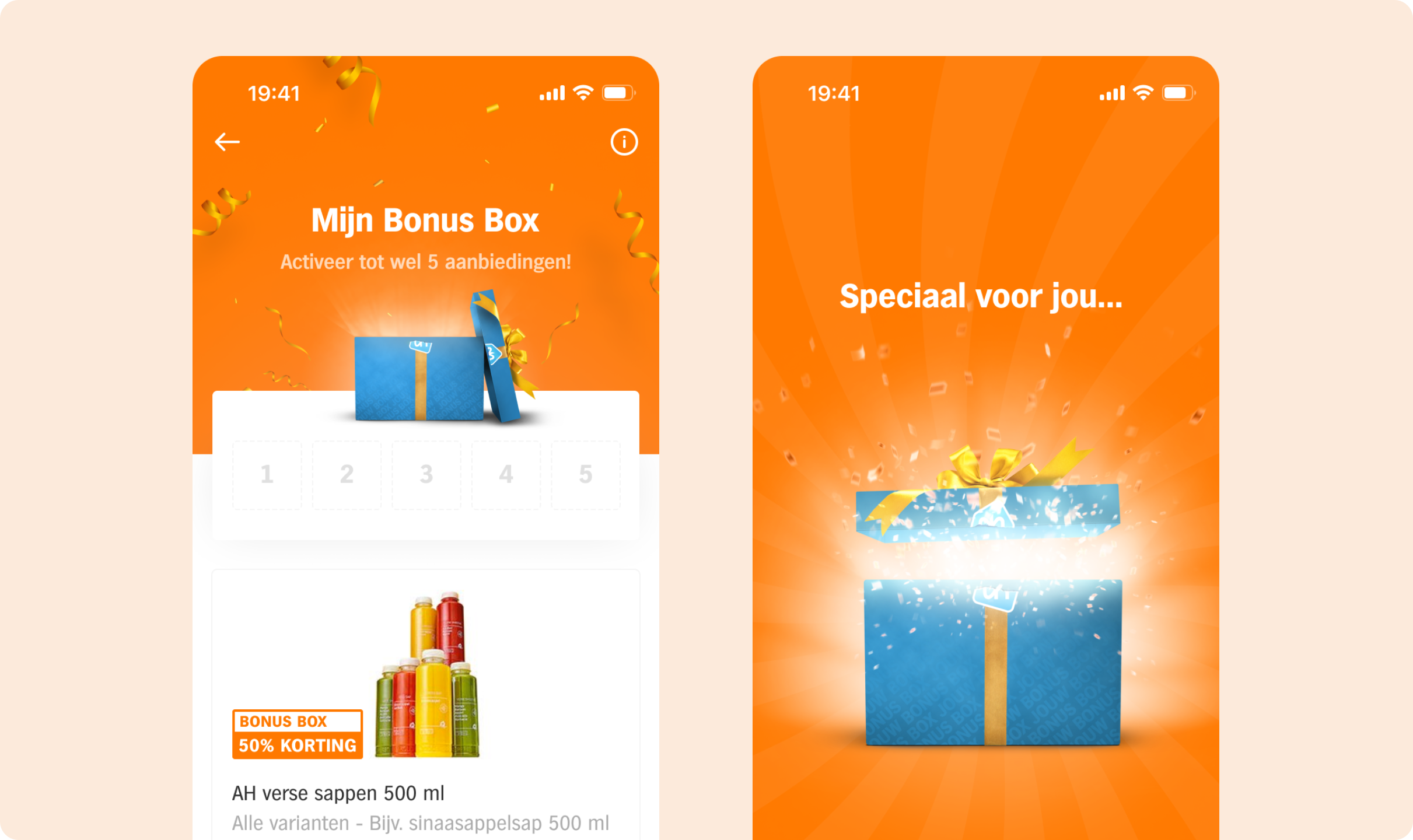
Albert Heijn
Solved the problem of "blind redemption" by designing a gamified experience that encourages customers to actively choose their personalised discounts.
